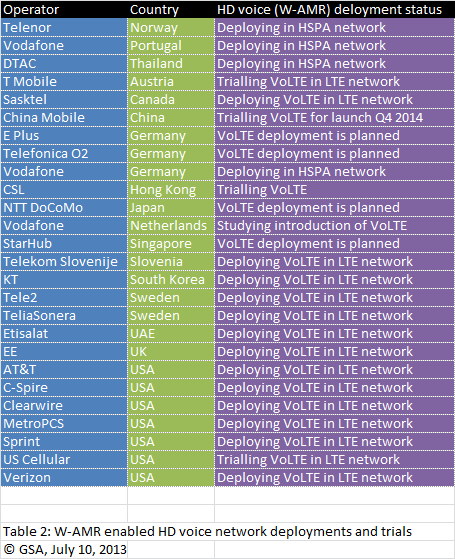 This post is by Catherine Lalanne, Product Manager, The Now Factory
This post is by Catherine Lalanne, Product Manager, The Now Factory
LTE is being deployed all over the world at breakneck speed to cover the vastly increasing demands for data from people and their machines. LTE is primarily being sold as a data technology, but many people still tend to see their smartphone as a voice device first with data capabilities added on. When these oh-so-smart smartphones fall down on the job and have a hard time fulfilling their primary function as a voice phone, it becomes a bit of a joke.
Voice over LTE (VoLTE) is designed to enable voice calls over a 4G LTE network, but a strange thing has happened: hardly anywhere in the word is Voice over LTE commercially deployed. Why is that?
Well, when you deploy a new LTE network, it is financially and logistically difficult to do everything at once. There are stopgap solutions, mostly CSFB (Circuit Switch Fall Back). In CSFB, the key word is “fall”. If a person wants to make a call or if somebody is trying to call that person, the phone falls back to good old 3G or 2G network. This is a clunky workaround and a resulting issue that we have seen with a few of our network operator customers is that to establish a call end to end can easily take 5 to 6 seconds. That’s a long time to wait while shouting “allo allo” in that crowded train station with all those eyes on you. At the LTE World Summit earlier this year, we even heard the story of an unhappy Scandinavian customer who called his operator’s help line because he kept missing incoming calls while using their LTE network. He was told that they just knew how to fix it: simply go to the phone settings and disable LTE!
In the US in particular, the workaround is to get a phone to be connected at all time on both CDMA (for voice) and 4G LTE (for data). However, the predictable drain on battery life is a killer.
On the other hand, Voice over LTE really is the obvious way to go. It has a unique connection and is thus a much simpler and safer way to implement both voice and data services. Crucially, it also comes with a much better spectral efficiency. You can pack six times as many calls on LTE as on an ancient 2G circuit-switch, and at least twice as many calls than a 3G circuit switch. You remember the charming operators in those black and white films plugging a cable literally from one number to another in a cabinet to connect your call? That’s circuit switching.
Radio frequency allocation is certainly a very precious asset to optimise. There’s also the threat of OTT applications that get the edge by offering extra services around the basic voice call, high definition calls, video, chats… (often for free!).
LTE design is based around enabling different levels of QoS (for different pricing) and VoLTE is based on IMS, which is a complete platform for all those extra services and quality levels. Those IMS platforms are being deployed by a number of operators for RCS/eRCS services over 3G right now and integration to LTE is the obvious next step.
So, again, why are we not seeing more comprehensive VoLTE deployments?
Well, look at where VoLTE is fully deployed commercially: South Korea, which is also the only country with full LTE coverage. In spite of all the commercials shouting, LTE coverage is very far from universal in the vast majority of countries. If you don’t have full coverage, then you have to deploy SRVCC to fall back (again) to 2G / 3G, whenever the customer leaves 4G coverage. It still means you will need to upgrade ALL your MSCs, a substantial and disruptive cost.
VoLTE is also still a very new technology. Good old reliable “circuit switch” just works. All those difficult systems like billing and roaming are already in place. VoLTE is notoriously heavy on battery life, though all key suppliers are working on more sophisticated chips to overcome this issue. Release 11 covers current radio block use issues as well as mitigating cell edges and interference problems. Current mobility issues we can see over young LTE deployments are being ironed out.
So it is time to move to VoLTE? It depends a lot on your current set up, how wide your LTE deployment is going to be in the next year, how integrated you are already with IMS, how upgradeable your MSCs are, and how keen your customers are to upgrade to the latest LTE phones. It’s really a question of when rather than if. When making the decision, it certainly helps to have a good view of your customers’ experience.
To learn more about The Now Factory, please contact us using the link below We will also be at the upcoming LTE Asia from Sep 17-18 and would welcome an opportunity to meet with you if you will be attending.
To request a meeting with one of our team, please click here.


Written by Guest Author
Leave a comment